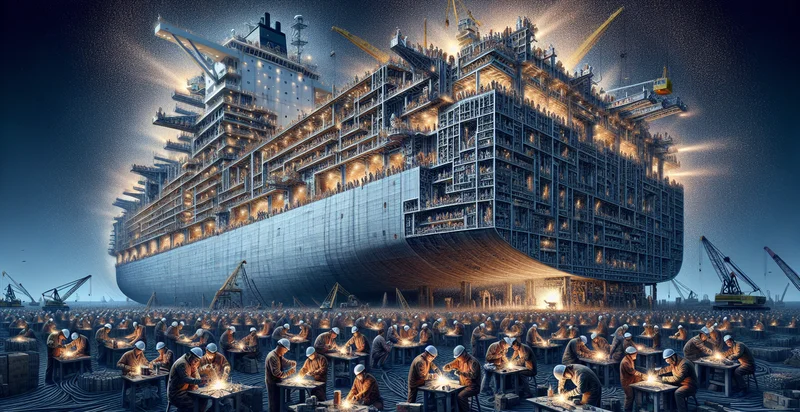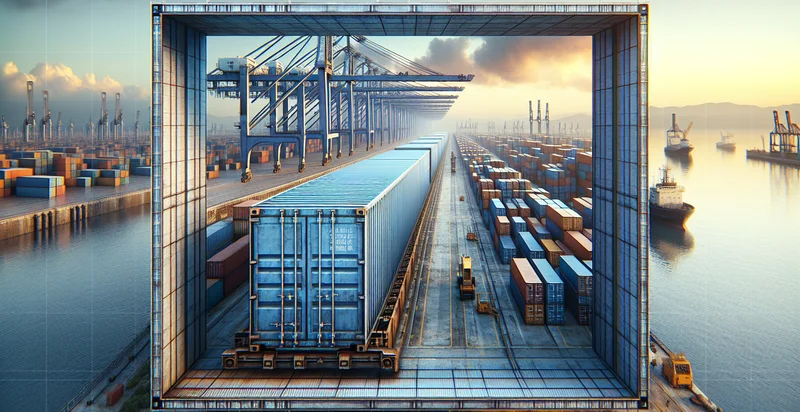Identify container ship make
using AI
Below is a free classifier to identify container ship make. Just upload your image, and our AI will predict what type of container ship it is - in just seconds.

Contact us for API access
Or, use Nyckel to build highly-accurate custom classifiers in just minutes. No PhD required.
Get started
import nyckel
credentials = nyckel.Credentials("YOUR_CLIENT_ID", "YOUR_CLIENT_SECRET")
nyckel.invoke("container-ship-make", "your_image_url", credentials)
fetch('https://www.nyckel.com/v1/functions/container-ship-make/invoke', {
method: 'POST',
headers: {
'Authorization': 'Bearer ' + 'YOUR_BEARER_TOKEN',
'Content-Type': 'application/json',
},
body: JSON.stringify(
{"data": "your_image_url"}
)
})
.then(response => response.json())
.then(data => console.log(data));
curl -X POST \
-H "Content-Type: application/json" \
-H "Authorization: Bearer YOUR_BEARER_TOKEN" \
-d '{"data": "your_image_url"}' \
https://www.nyckel.com/v1/functions/container-ship-make/invoke
How this classifier works
To start, upload your image. Our AI tool will then predict what type of container ship it is.
This pretrained image model uses a Nyckel-created dataset and has 20 labels, including Apl, Cma Cgm, Cosco, Daewoo, Evergreen, Friendship, Hapag-Lloyd, Hyundai, K Line and Maersk.
We'll also show a confidence score (the higher the number, the more confident the AI model is around what type of container ship it is).
Whether you're just curious or building container ship make detection into your application, we hope our classifier proves helpful.
Related Classifiers
Need to identify container ship make at scale?
Get API or Zapier access to this classifier for free. It's perfect for:
- Shipping Fleet Management: Implement the false image classification function to verify container ship identifiers during fleet management operations. By catching discrepancies in ship identification, companies can ensure accurate tracking of vessels, leading to improved logistical efficiency and reduced operational costs.
- Insurance Fraud Prevention: Utilize the function in the insurance industry to detect fraudulent claims related to container ships. By confirming the authenticity of images submitted as evidence for damage or loss, insurers can minimize fraudulent payouts and enhance their overall risk management processes.
- Port Security Enhancement: Deploy the image classification function at ports to monitor incoming and outgoing vessels. By rapidly analyzing images of container ships against known identifiers, port authorities can enhance security measures and prevent unauthorized access or smuggling operations.
- Trade Compliance Auditing: Apply the classification function to assist in verifying compliance documentation for container ships involved in international trade. By ensuring that the correct vessels are associated with specific trade agreements, businesses can avoid legal issues and penalties associated with non-compliance.
- Maritime Inventory Management: Use the classification function to improve inventory checks for shipping companies. By automatically identifying container ships and correlating them with inventory records, companies can achieve greater accuracy in their supply chain management.
- Environmental Monitoring: Incorporate the function into environmental tracking systems to monitor the types of containers being transported. By accurately identifying ships, organizations can assess their environmental impact and ensure compliance with regulations regarding hazardous materials.
- Customer Interface and Transparency: Integrate the classification function into customer-facing applications for real-time tracking of container ships. This can enhance customer confidence and satisfaction by providing accurate information on shipping status and vessel identification, thereby improving overall service transparency.


